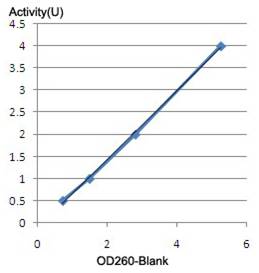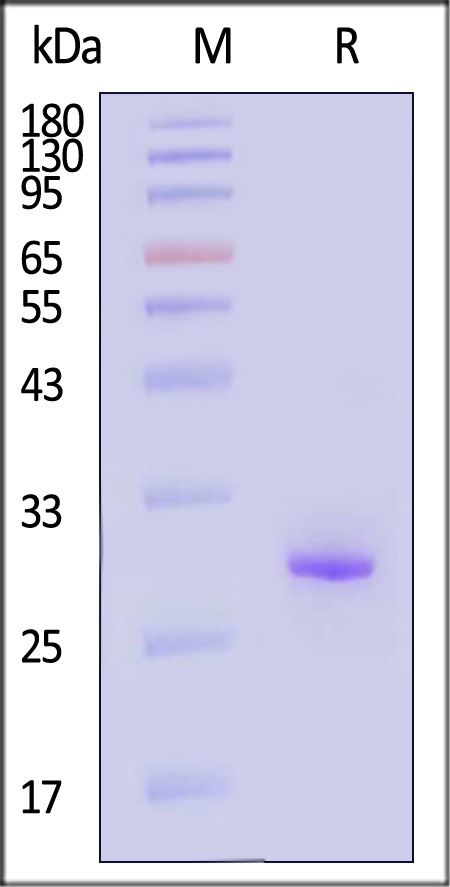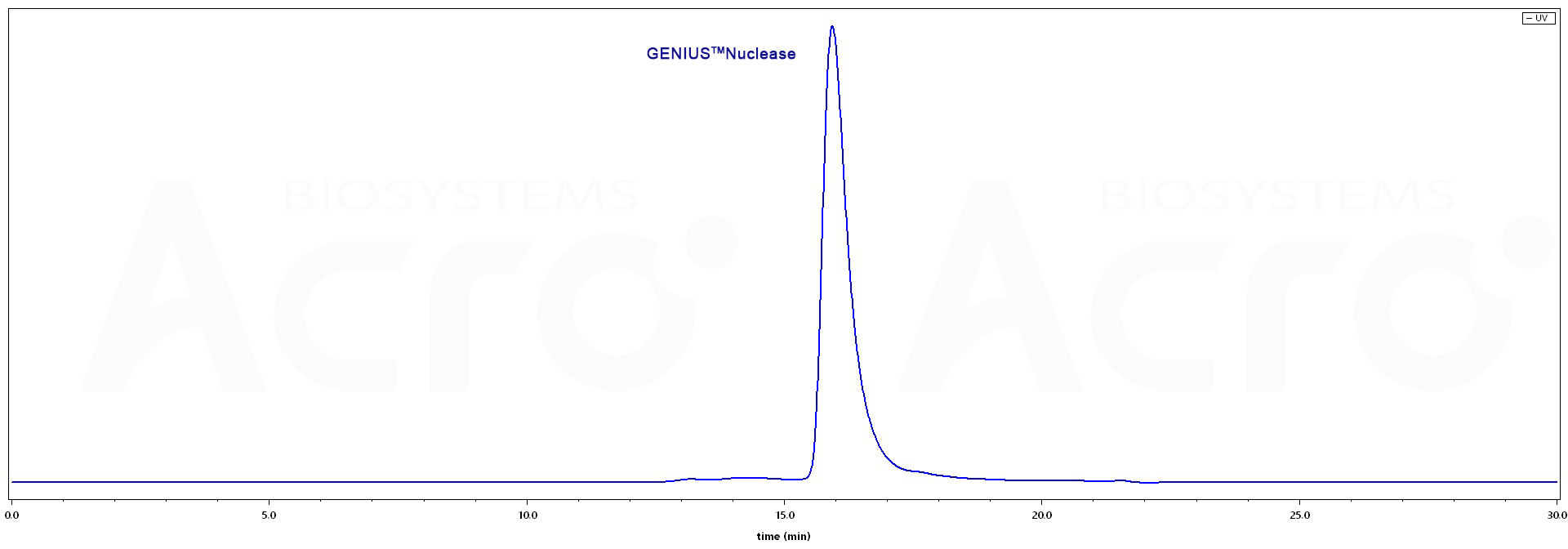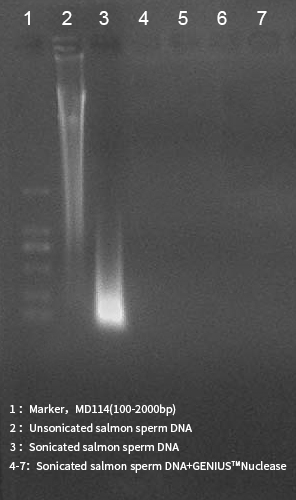产品详情
-
Source
GENIUS™Nuclease is a recombinant form of Serratia marcescens extracellular endonuclease produced in Escherichia coli cells using a proprietary process at ACRObiosystems. GENIUS™Nuclease is a homodimer with monomer molecular masses about 30 kDa. Two disulfide bonds found in the nuclease are crucial to its activity and stability. The enzyme is a non-specific nuclease with high specific activity, which degrades both single- and double-stranded nucleic acids in any form ( single stranded, double stranded, linear, circular and supercoiled). It hydrolyzes internal phosphodiester bonds present between the nucleotides to 5‘- phosphorylated oligonucleotides of 3-5 bases in length.
-
Application
Its high intrinsic activity and broad substrate tolerance make the endonuclease an ideal tool in a variety of biotechnological and pharmaceutical applications: removal of nucleic acid from protein samples ( Elimination of nucleic acids from recombinant proteins; Purification of protein fragments from inclusion bodies; Sample preparation in western blotting or two- dimensional gel electrophoresis) ; Viscosity reduction in protein extracts.
-
Operating conditions
GENIUS™Nuclease is functional between pH 6 and 10 (optimal at pH8 - 8.5) , and from 0℃ to 42 ℃ (optimal at 35 ℃ - 42 ℃). Mg2+ (1-2 mM) is required for enzyme activity.
1 mM EDTA reduced the activity by 30% in the presence of 1 mM MgCl2; 0.1 M EDTA eliminated all enzyme activity. In the presence of 1 mM MgCl2, enzyme levels were reduced 75% by 0.1 M CaCl2 or 1 M NaCl. Under standard assay conditions, 1 mM iodoacetate had no effect on the enzymatic rate, whereas 1 mM mercaptoethanol and maleic acid reduced the activity by only 5 to 10%. 10 mM p- Chloromercurybenzoate completely inactivates the enzyme, while 0.64 M beta-mercaptoethanol in the presence of 2 M urea causes only partial inactivation of the enzyme. 4 or 7 M Urea increases the enzyme activity.
-
Removal of GENIUS™Nuclease
GENIUS™Nuclease contain no “Tag” and used in downstream processing can be removed by various purification methods according to the purification strategy for the target protein.
-
Formulation
Lyophilized in Tris HCl, pH 8.0, MgCl2, and NaCl.
-
Reconstitution
See Certificate of Analysis for reconstitution instructions and specific concentrations.
-
Purity
>95 % as determined by SDS-PAGE reduced GENIUS™Nuclease.
-
Activity Assay Procedure
1. Reagents and solutions preparation Reaction buffer*:
50 mM Tris-HCl, 1 mM MgCl2, pH 8.0 ( * In the case of extensive dilution before use, carrier protein such as 0.1 mg/ml HSA or BSA is generally recommended to avoid any enzyme loss from surface adsorption)
DNA Substrate:
1 mg/ml salmon sperm DNA is dissolved overnight at 4 ℃, in reaction buffer, and is then sonicated on ice to obtain a homogenous solution. Enzyme:
Different dilution of nuclease with reaction buffer.
Stop reagent:
Trichloroacetic acid (TCA)2. Standard curve establishment 400 μl substrate + 100 μl enzyme of known activity = 500 μl mixture
- Incubate the mixture at 37℃ for 30 min.
- Stop the reaction by addition of 400 μl cold TCA and incubate on ice for 10 min.
- Centrifuge at 8500g for 5 min.
- Measure the absorbance of supernatant at 260 nm.
- Lot a standard curve with nuclease of known activities for each set of measurements.
3. Measurement of activity
The activity of any unknown nuclease can be determined from a single measurement by means of the standard curve. The specific activity of GENIUS™Nuclease is >1.0 x 10e6 unit/mg protein. -
Activity

Standard curve of nuclease activity for GENIUS™Nuclease.
-
Unit Definition
One unit will digest sonicated salmon sperm DNA to acid-soluble oligonucleotides equivalent to a ΔA260 of 1.0 in 30 min at pH 8.0 at 37 ℃, which corresponds approximately to complete digestion of 37 μg DNA. Note that 1 KU=1000 units.
-
Storage
Avoid repeated freeze-thaw cycles.
This product is stable after storage at:
In lyophilized state for 1 year (-20oC); After reconstitution under sterile conditions for 3 months (-70oC). - Notice: We updated the brand name from Benz™Nuclease to GENIUS™Nuclease. The products are the same and the only change is the brand name in the product name and the label.
产品展示
-
电泳(SDS-PAGE)

The purity of GENIUS™Nuclease was determined by SDS-PAGE reduced and staining overnight with Coomassie Blue.
-
SEC-HPLC

The purity of GENIUS™Nuclease (Cat. No. BEE-N3116) is more than 95% as determined by SEC-HPLC.
Report
-
Application example

The result of GENIUS™Nuclease activity.
用户评价 发表评论















